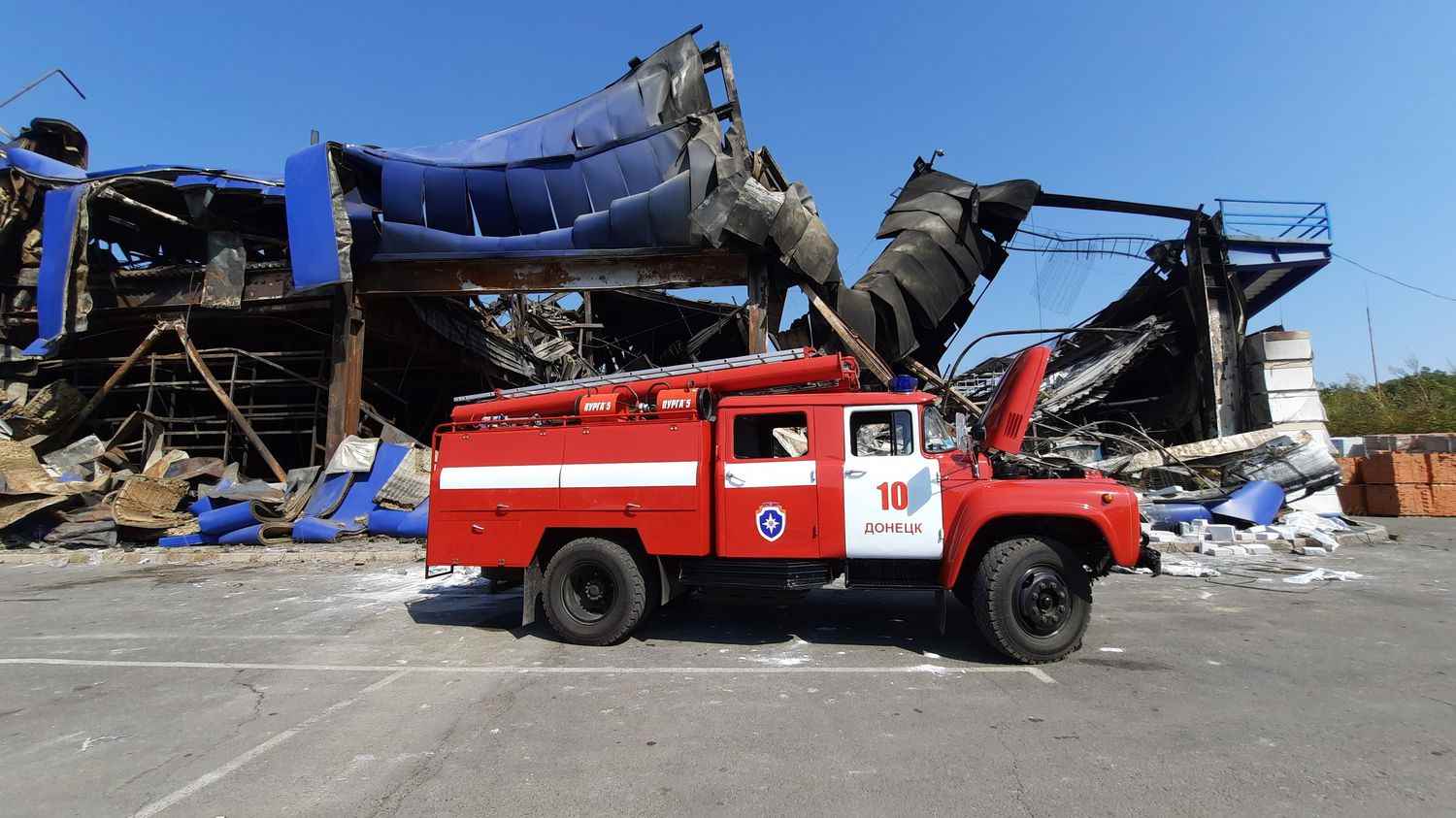Sylvain Tronchet, correspondent for Radio France in Moscow, was able to accompany the Russian army in the Donbass. The highlight of this report was the highly supervised visit to the Zaporijjia nuclear power plant.
In a war, even when the aggressor and the attacked are clearly identified, the reporter must cover the two opposing lines on a front. However, since the start of the conflict, journalists have struggled to work with the Russians in southern Ukraine and particularly in the Donbass. Two options present themselves to them: obtain authorization from the pro-Russian separatists, very rare derogations, or wait for a press trip organized by the Kremlin, which is just as rare.
And yet, it is this second option that presented itself. Behind the alibi of transparency obviously hides the idea of showing the damage caused by the Ukrainian army and all the efforts undertaken by the Russians, their benevolence towards the population and the reconstruction sites which aim at the Russification of the areas deserted.
Sylvain Tronchet, the correspondent of Radio France in Moscow was struck by these brand new buildings that came out of the ground in Mariupol in two months, a thousand apartments. The technique is proven. Already in 2014, when it annexed Crimea, Russia released massive funds to renovate infrastructure and inject cash to revive the economy.
But Donbass is not Crimea. Firstly because in the Crimea, the annexation took place without bombardments and without cannon fire and because the surface of the territory is not the same. Rebuilding over vast devastated areas will take a long time, and above all it will be a money pit. In the meantime, spectacular images of these new buildings, show apartments still deserted, which adjoin the gutted houses, craters in the streets, and charred cars.
For us, French reporters, he is often associated with reporting alongside the American army, in recent years, in Afghanistan or Iraq. Developed also with the Kurds in Syria, and with some Ukrainian fighters on the front. From this point of view, the principle Embedded is the same whether it is led by the American army or the Russian army: the reporter only sees what is shown to him and he does not see the rest. It’s part of the story, perhaps even arranged for propaganda, but it’s not the story, the fact, in its entirety and complexity.
The reporter must therefore take with great distance and reflection what is said to him, what is struck at him. For example, the fact that the interlocutors of journalists who have left for the Donbass are chosen by the over-armed Russian soldiers who supervise them do not promote freedom of speech. The reporters made their frustrations known to the Russian General Staff, which therefore allowed a little more open circulation in a territory occupied by the Russians. Those who could challenge this occupation, those who stayed do not rush to the microphone to speak. They do, but with moderation, both in the length of the sentences and in the content of the remarks.
It is in the gaze and the language of the body, even in the silences, that the unspeakable can be perceived. But it is not up to the journalist to interpret a silence or something left unsaid. After several days in the Donbass with the Russians, what marks Sylvain Tronchet are the deserted towns. The cities in ruins, the reconstruction, the Russification which goes through the passports and the license plates of the cars. Those who remained complied, but the big question is whether the population that left will return and accept the new rules, if these rules persist and are not challenged by another act of war.

The other highlight is obviously the visit to the nuclear power plant in Zaporizhia. A shadow factory, so the level of security requires a lot of personnel. Apart from a few cars in the parking lot, Russian soldiers standing guard, there is hardly anyone.
The Russians showed the reporters the damage caused by a Ukrainian bombardment, they say, damage which, according to the experts of the International Atomic Energy Agency, would be minor, therefore possibly dramatized by the Russians, but what does not obviously does not prevent the Agency from claiming, in its report delivered this week, a safety zone around the plant. Because, as Sylvain Tronchet points out, the appalling fact remains that one of the largest nuclear power stations in Europe is located in a theater of war.
